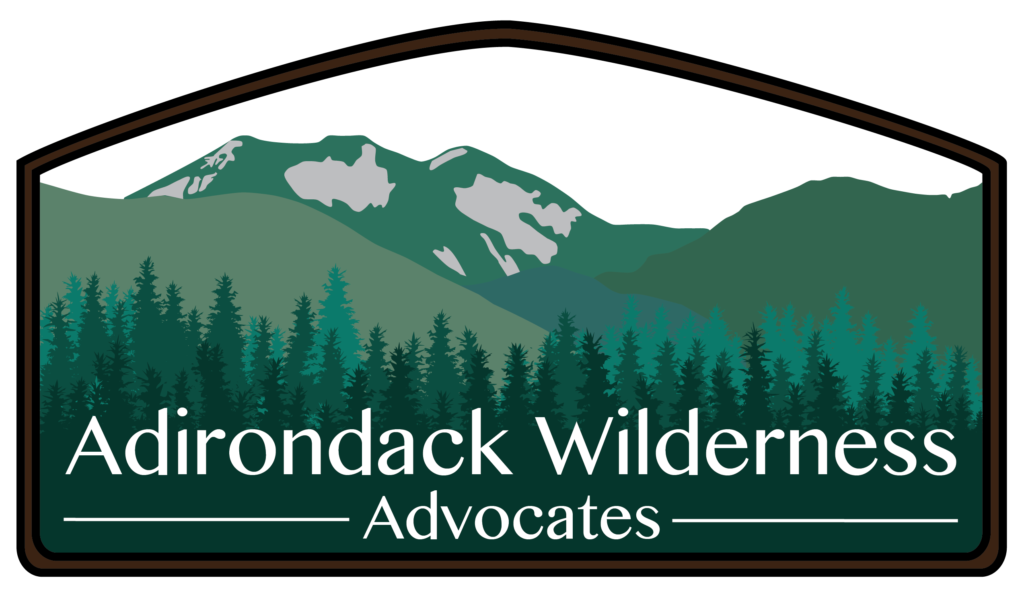Dear AWA Supporters:
We are facing a potential crisis with Adirondack Park advocacy which should concern all of us. There is a growing perception that green groups are willing to ignore or compromise the rights of people with disabilities. If not countered, this perception will do serious damage to both Wilderness values and to the rights of all visitors and Park residents , including those with disabilities. Consequently, we feel it is important to offer as much clarity on AWA’s position as we can.
As you know, the Adirondack Park Agency has proposed amendments to the State Land Master Plan (SLMP). The public comment and public hearing phase of that process is complete and APA staff are presumably adjusting the language and preparing to make their recommendation to the APA Board. AWA has testified and submitted our comments as part of that process, and we submitted the petitions that many of you signed. Thank you, as always!
The issue over which we have acute concern is the proposed language to redefine “motor vehicle” to exclude so-called “other power-driven mobility devices” (OPDMDS) such as golf carts, ATV’s, and even cars or trucks that can traverse rough and uneven terrain. This redefinition would fundamentally alter the traditional definition of Wilderness, which has always had the prohibition of motor vehicle access by the public as an essential tenet.
The current crisis has developed because positioning and perception has pitted the interests of those who have disabilities or advocate for their rights in opposition to the interests of those who want to protect Wilderness from motorized access. This is typical of Adirondack debates throughout history: various interests end up pitted against each other as though they are on starkly opposite sides. This perception of stark opposition is usually not true, and it certainly isn’t true in this case. It’s terribly unfortunate: everyone loses and trust becomes a long-term casualty. We need to do better.
AWA contends that the right of equitable access to public places and facilities for those with disabilities is fundamental. We also contend that the right of Wilderness to be protected as defined in Federal law and in New York State law – the only land classification that is to be met on its terms, not human terms, untrammeled, where people are visitors whose imprint is largely invisible – is fundamental too. AWA contends that both these rights can be balanced in a reasonable way.
That these two fundamental rights do not align may be seen as contentious, but that unfortunate assumption ignores political, ethical and moral reality, especially in the United States. In our democracy, fundamental rights are balanced all the time, as is self-evident in any examination of American constitutional rights and how they are interpreted by the courts. Free speech is protected; hate speech is not. Freedom of religion is protected; a religious practice that deprives someone of liberty is not.
Constitutional rights may make for a dramatic example, but the body of practical law that governs the rights and limitations of people in everyday life is replete with balance. A good example will illustrate the issue with respect to those with physical disabilities. The Americans with Disabilities Act (ADA) specifically protects the right of people with disabilities to obtain a driver’s licenses. However, drivers with disabilities still have to obey the traffic laws just like everyone else, and they are required to have whatever modifications are needed in order to ensure safe driving. In other words, the right of all drivers to reasonably meet the conditions of safe travel on roads is balanced.
With this example in mind, a reasonable balance for our Adirondack conundrum can be simply stated: the right of a person with a disability to access Wilderness is protected; the right of a person with a disability to access Wilderness with a motor vehicle is not. As one of the co-founders of the Adirondack Diversity Initiative stated in a recent meeting with the DEC, the prohibition on motor vehicles in Wilderness is a prohibition on devices, not people. There are a variety of ways to assist and accommodate people with mobility limitations who want to experience Wilderness; we don’t need motor vehicles to do it. The ADA already establishes this balance: the law allows access to Federal Wilderness by people in wheelchairs, but not OPDMDs. We should have the same balance in New York.
